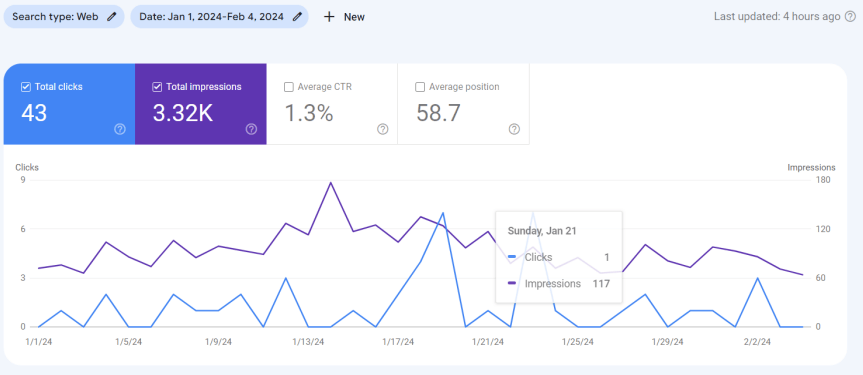Measuring the effectiveness of your content marketing efforts is crucial for optimizing your strategy and achieving your business objectives. Here's a concise guide to help you understand and implement effective content marketing measurement, incorporating examples and insights from leading sources.
Setting Up Your Measurement Framework
Start by defining your marketing goals and aligning them with your business objectives. Whether you aim to increase brand awareness, generate leads, or drive sales, your content goals should be specific, measurable, achievable, relevant, and time-bound (SMART) . Consider using Google Sheets or another collaborative platform to track your key performance indicators (KPIs) and ensure that everyone involved in content creation is on the same page.
Essential Metrics to Track
Website Analytics:

- Unique Visitors and Page Views: Measure the overall traffic and engagement with your content. A higher number of page views per visitor suggests engaging content.
- Bounce Rate: A lower bounce rate indicates that visitors find your content relevant and are exploring more of your site.
- Conversion Rate: Track how well your content prompts visitors to take a desired action, like signing up for a newsletter.
Social Media:
- Engagement Metrics: Keep an eye on shares, comments, and follower growth. These indicators help gauge how well your content resonates with your audience and fosters community engagement.
SEO and Backlink Analysis
SEO Metrics:

- Organic Traffic and Dwell Time: Track how users find your website through search engines and the time they spend on your pages. These metrics can indicate the relevance and value of your content to your audience.
- Backlinks: Monitor the number and quality of backlinks to your website. High-quality backlinks enhance your site's credibility and search engine ranking.
Content ROI
Calculate your content marketing ROI by comparing the revenue generated from your content against the investment in content creation and distribution. This calculation helps determine the financial effectiveness of your content marketing efforts.
Impressions and Traffic Sources: These metrics identify how often your content is displayed across various platforms and the origins of your site traffic, such as organic search, social media, or direct visits. This information helps you understand which channels are most effective in bringing visitors to your site and the level of exposure your content is getting.
Brand Mentions: Tracking mentions of your brand across the web and social media provides insights into your brand's visibility and reputation. Tools like Google Alerts or Mention can automate this process, allowing you to gauge public perception and the reach of your content marketing efforts.
Long-Term Engagement and Retention
Customer Retention Rates: Evaluating the effectiveness of content marketing over time involves looking at customer retention rates. High retention rates indicate that your content continues to resonate with your audience, fostering brand loyalty and contributing to a cost-effective marketing strategy.
Sustained Engagement: Monitoring engagement metrics over longer periods can help you understand how well your content maintains its relevance and value to your audience. This includes tracking repeat visits, time spent on content, and ongoing social media interactions.
Content Optimization and Adaptation
A/B Testing: Regularly testing different versions of your content can reveal preferences in your audience's tastes and behaviours. This might involve experimenting with headlines, images, or call-to-action phrases to determine what maximizes engagement and conversions.
Content Audits: Conducting periodic content audits enables you to assess the performance of your entire content library. This process helps identify which pieces are performing well, which need optimization, and which should be retired, ensuring your content remains fresh and relevant.
Reporting and Stakeholder Communication
Visual Reporting: Use visual analytics and reporting tools to present your data compellingly. Charts, graphs, and dashboards can simplify complex data, making it easier for stakeholders to understand the impact of your content marketing efforts.
Narrative Reporting: Crafting your reports as narratives can help provide context and coherence to the data, transforming numbers into stories that illustrate your content marketing journey, its successes, challenges, and the strategies that drove results.
Continuous Improvement and Learning
- Benchmarking: Compare your performance against industry standards or direct competitors to understand your content's standing in the broader market. This can help set realistic goals and identify areas for improvement.
- Feedback Loops: Implement mechanisms for collecting feedback from your audience and internal teams. Surveys, comment sections, and social media can provide qualitative insights that complement your quantitative data, offering a fuller picture of your content's impact.
- Learning from Successes and Failures: Analyze both your most successful content and pieces that didn't perform as expected. Understanding why certain content resonates with your audience or falls flat can inform future content creation and optimization strategies.
Integrating Technology and Tools
- Leveraging AI and Machine Learning: Advanced analytics platforms now incorporate AI and machine learning to offer predictive insights and content recommendations. These technologies can help identify trends and content preferences you might not have noticed, enabling more targeted and effective content strategies.
- Automation Tools: Automate repetitive tasks related to content marketing measurement, such as data collection, reporting, and even some aspects of content creation. This frees up time for strategic thinking and creativity, allowing you to focus on producing high-quality content.
Measuring the effectiveness of your content marketing is not a one-time task but a continuous process that evolves alongside your content and audience. By setting up a comprehensive measurement framework, tracking essential metrics, and continuously optimizing your approach based on data-driven insights, you can enhance your content's impact and achieve your business objectives. Embrace technology and tools to streamline this process, and always stay open to learning from both successes and challenges. With a strategic and adaptable approach to content marketing measurement, you can ensure your content not only reaches but resonates with your target audience, driving engagement, loyalty, and conversions.



